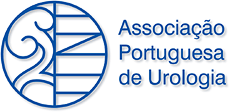Endoscopic Balloon Dilatation for Treatment of Primary Obstructive Megaureter: Experience of a Center
DOI:
https://doi.org/10.24915/aup.34.1-2.41Keywords:
Child, Constriction, Pathologic, Dilatation, Endoscopy, Hydronephrosis, Ureter/abnormalities, Ureteral ObstructionAbstract
Introduction: Congenital obstructive megaureter may be treated with endoscopic balloon dilatation, particularly in children under one year of age. We report our experience over a six year period.
Patients and methods: All patients with diagnosis of primary obstructive megaureter (POM) treated with endoscopic balloon dilatation from 2009 to 2014 (6 years) were included. The diagnosis of POM was based on dilatation of the distal ureter greater than 7 mm, obstructive curve on MAG 3 diuretic renogram and absence of vesicoureteral reflux (VUR). After diagnosis, conservative management was maintained with antibiotic prophylaxis in all patients. The indications for surgery were a combination of clinical, ultrasonographic and renographic findings. Under general anesthesia and after retrograde ureteropielography, high pressure balloon dilation of the ureterovesical junction was performed under direct and fluoroscopic vision until the disappearance of the narrowed ring. A double-J catheter was positioned. Follow-up was performed with ultrasonography and diuretic renogram. The success of the intervention was defined by improvement of HUN (at least 2 grades).
Results: A total of nine patients underwent this procedure on a single ureter, two girls and seven boys, with a mean age of 7. 6 months (range 1-14) at the intervention. Five were left sided and four were right sided. All patients had prenatal diagnosis of hydroureteronephrosis (HUN). No patients were lost to follow-up (average 46.7 months). They all had HUN greater than grade 3 and preoperative MAG3 diuretic renogram was obstructive in all cases. Mean differential function of the affected kidney was 46.2% (range 40-53%). The main indication for surgical treatment was progressive HUN. All patients were treated endoscopically with no intraoperative complications. Ultrasound showed improvement of the HUN in six patients (66.7%). Three patients were reimplanted (33.3%). The mean differential renal function (DRF) after the procedure was 47.4% (range 41-53%). At the latest follow-up assessment, all patients remained asymptomatic.
Discussion: Endoscopic balloon dilatation is a useful option in the management of POM requiring surgical intervention and may be considered first line treatment in small children.
Downloads
References
2. Farrugia MK, Hitchcock R, Radford A, Burki T, Robb A, Murphy F et al. British Association of Paediatric Urologists consensus statement on the management of the primary obstructive megaureter. Journal of Pediatric Urology, vol. 10, 2014, p. 26-33.
3. Carrol D, Chandran H, Joshi A, McCarthy L, Parashar K. Endoscopic placement of a double-J ureteric stents in children as a treatment for primary obstructive megaureter. Urology Annals, 2010 Sep-Dec; 2(3): 114-118.
4. García-Aparicio L, Blásquez-Gómez E, Martin O, Palazón P, Manzanares A, García-Smith N et al. Use of high-pressure balloon dilatation of the ureterovesical junction instead of ureteral reimplantation to treat primary obstructive megaureter: is it justified?. Journal of Pediatric Urology, vol. 9, 2013, p. 1229-1233
5. Bujons A, Saldaña L, Caffaratti J, Garat JM, Angerri O, Villavicencio H. Can endoscopic balloon dilatation for primary obstructive megaureter be effective in a long term follow-up?. Journal of Pediatric Urology, vol. 11, 2015, p. 36e1-37.e6
6. Nguyen H, Benson C, Bromley B, Campbell J, Chow J, Coleman B et al. Multidisciplinary consensus on the classification of prenatal and postnatal urinary tract dilation (UTD classification system). Journal of Pediatric Urology, 2014, 10, 982-999
7. Timberlake D, Herndon D. Mild to moderate postnatal hydronephrosis--grading systems and management. Nature Reviews Urology, 2013, November; 10(11): 649-56
8. Kennedy W. Assessment and management of fetal hydronephrosis. Urology, Neoreviews, 2002, October, 3 (10)
9. Dean AG, Sullivan KM, Soe MM. OpenEpi: Open Source Epidemiologic Statistics for Public Health, Version3. www.OpenEpi.com, updated 2015/05/04, assessed on 2015/11/19.
10. Christman M, Kasturi S, Lambert R, Kovell R. Endoscopic management and the role of double stenting for primary obstructive megaureters. Journal of Urology, 2012, vol. 187: 1018-23.
11. García-Aparicio L, Rodo J, Krauel L, Palazon P, Martin O, Ribó JM. High pressure balloon dilatation of the ureterovesical junction – first line approach to treat primary obstructive megaureter?. The Journal of Urology, vol. 187, 2012, p. 1834-1838




